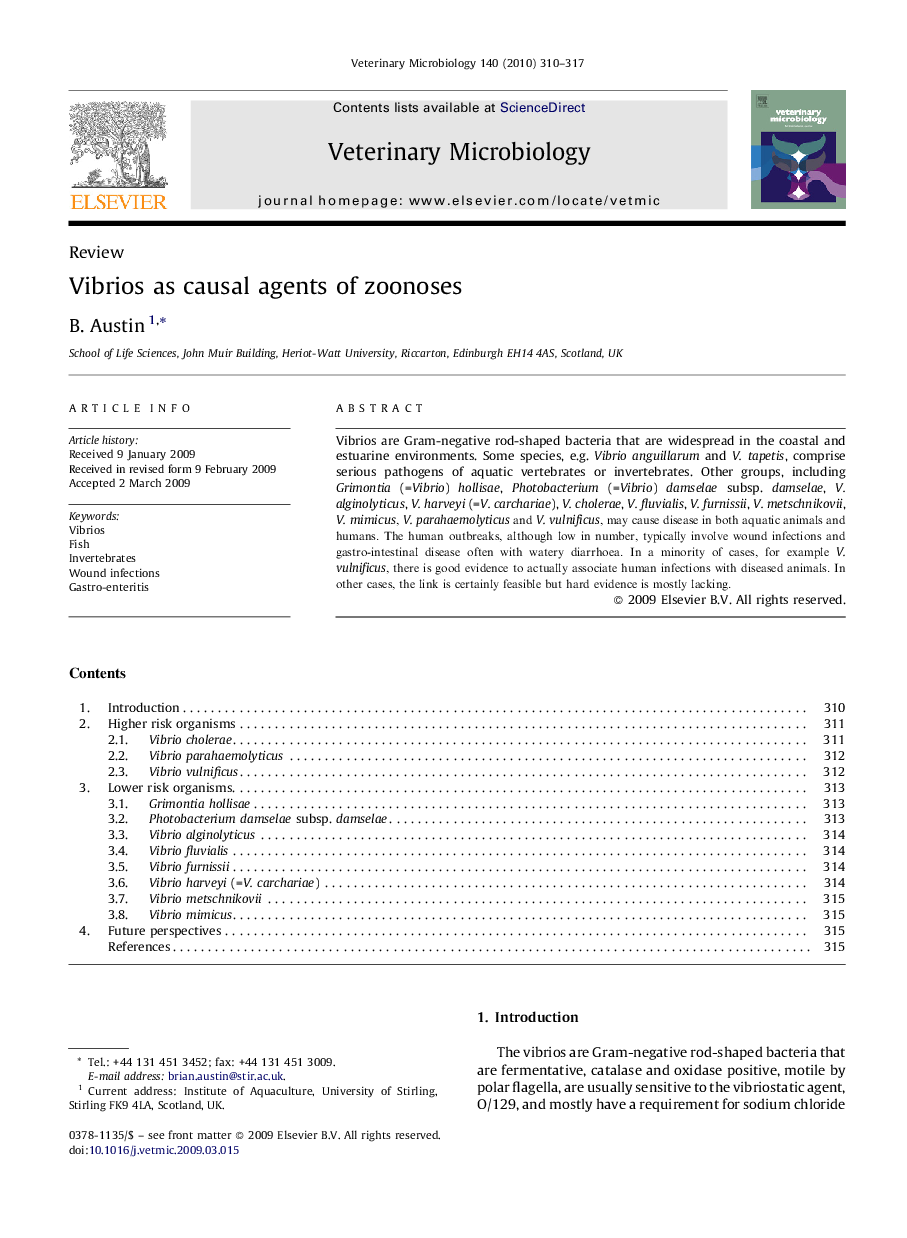| Article ID | Journal | Published Year | Pages | File Type |
|---|---|---|---|---|
| 2468107 | Veterinary Microbiology | 2010 | 8 Pages |
Vibrios are Gram-negative rod-shaped bacteria that are widespread in the coastal and estuarine environments. Some species, e.g. Vibrio anguillarum and V. tapetis, comprise serious pathogens of aquatic vertebrates or invertebrates. Other groups, including Grimontia (=Vibrio) hollisae, Photobacterium (=Vibrio) damselae subsp. damselae, V. alginolyticus, V. harveyi (=V. carchariae), V. cholerae, V. fluvialis, V. furnissii, V. metschnikovii, V. mimicus, V. parahaemolyticus and V. vulnificus, may cause disease in both aquatic animals and humans. The human outbreaks, although low in number, typically involve wound infections and gastro-intestinal disease often with watery diarrhoea. In a minority of cases, for example V. vulnificus, there is good evidence to actually associate human infections with diseased animals. In other cases, the link is certainly feasible but hard evidence is mostly lacking.
